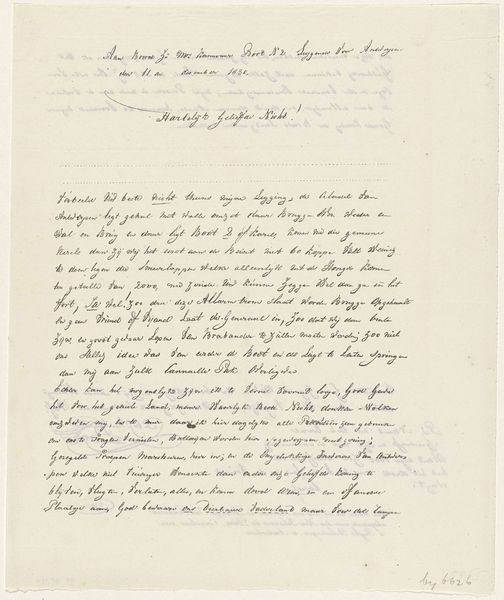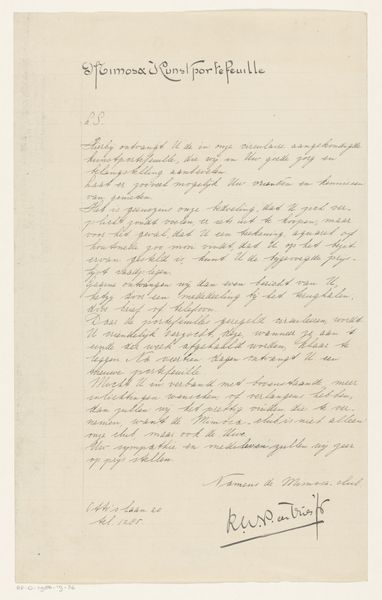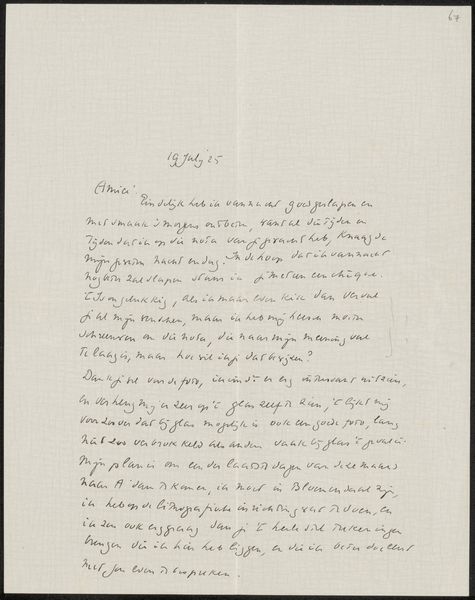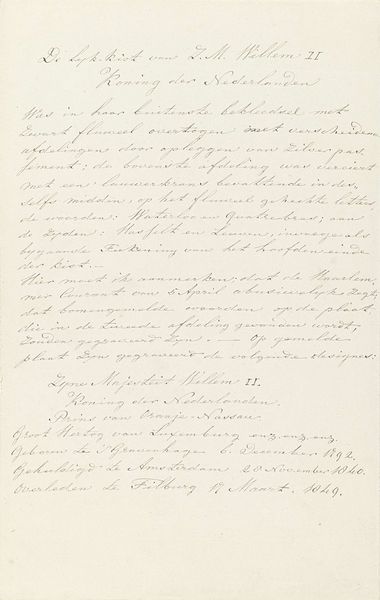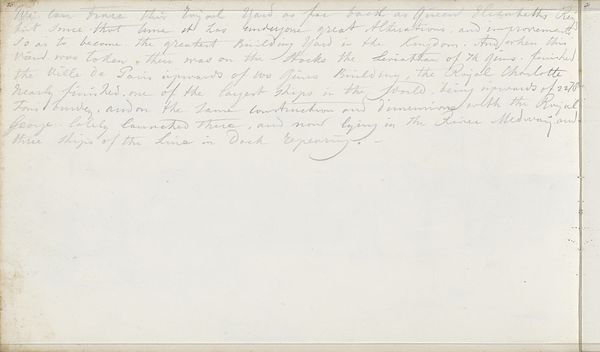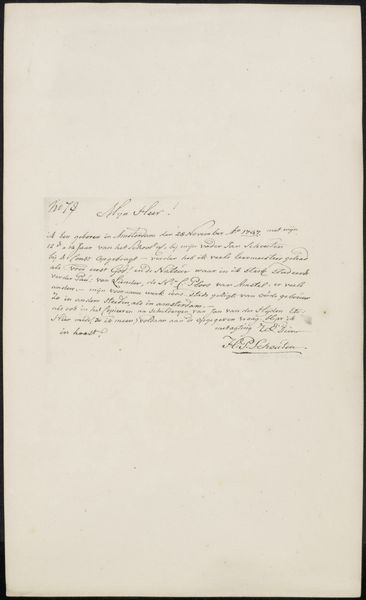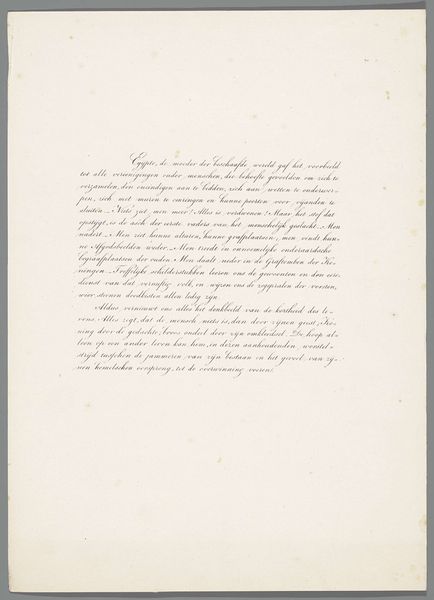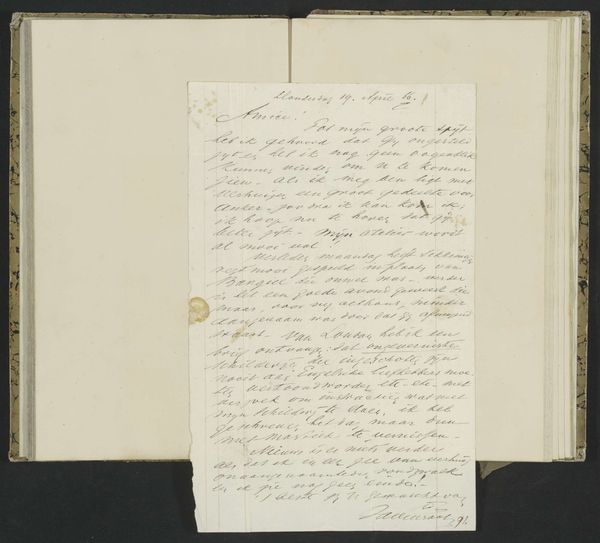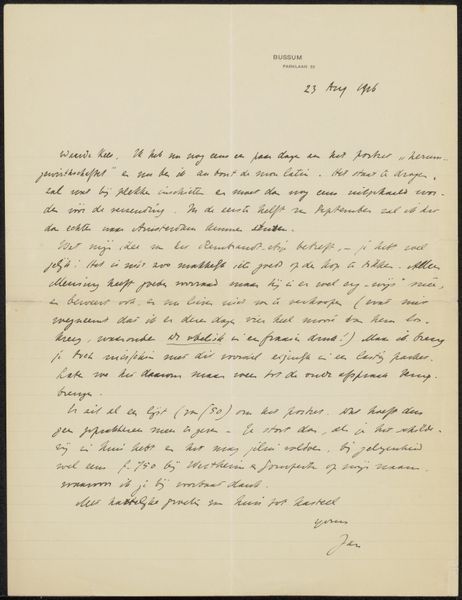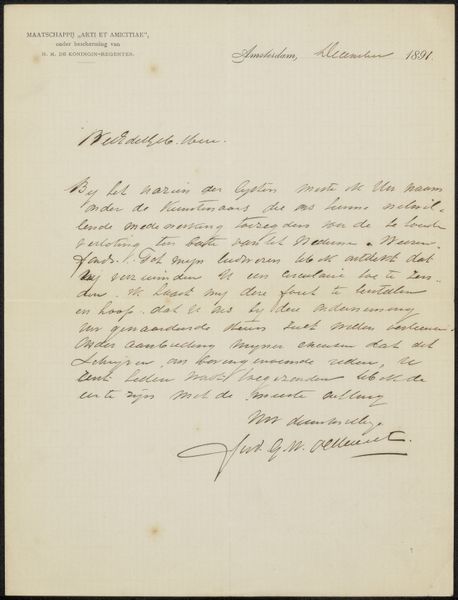
Facsimile van een brief van Jan van Speijk aan dhr. J. van Glein, 1821 1831 - 1832
drawing, paper, ink
drawing
hand written
script typography
old engraving style
paper
ink
fading type
romanticism
history-painting
Dimensions: height 176 mm, width 192 mm
Copyright: Rijks Museum: Open Domain
Curator: Here we have a facsimile, made between 1831 and 1832, of a letter written in 1821 by Jan van Speijk, a Dutch naval lieutenant. Editor: It's striking how the fading ink and paper create an immediate sense of historical distance, a whisper from the past. You can almost feel the weight of the words and the time that has passed. Curator: Van Speijk became a national hero because of his self-sacrificing act: he blew up his own gunboat in Antwerp to prevent it from falling into Belgian hands during the Belgian Revolution. The letter is addressed to Mr. J.V. Gleim, referencing personal matters alongside deeply felt emotions. It connects to Dutch Romanticism’s fascination with nationalism. Editor: The script itself is telling; the flourishes and elegant curves reflect the formality of the era, but there’s a fragility too. Letters held significant social and political weight in that historical context, serving as lifelines between individuals separated by distance or circumstance. This letter feels laden with the personal cost of duty, where individual identity and relationships become entwined with national identity. Curator: I'm especially drawn to the almost ornamental quality of the handwriting. Even in a personal letter, we see a careful construction of self, presented to the recipient and now to posterity. Editor: Indeed, the letter is as much about constructing a personal narrative as it is conveying information. It speaks volumes about the performance of identity during this period. It is so carefully and artistically done to leave a record, knowing future audiences will perceive these visual and textual elements in this symbolic form. Curator: I agree; there’s a clear intention to shape his legacy. This resonates through history. Even a copy serves that function. Editor: Thinking about this letter in its historical context sheds light on our present relationship to personal and national identity. It's a good reminder that self-representation has always been a blend of the personal and the political. Curator: The act of creating a facsimile only reinforces that idea of constructed legacy, reminding us how historical figures often become symbols. Editor: Exactly, it shows that the past is always being re-presented through contemporary lenses. Fascinating!
Comments
No comments
Be the first to comment and join the conversation on the ultimate creative platform.
